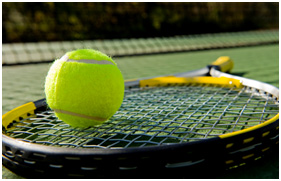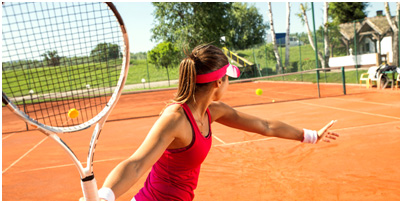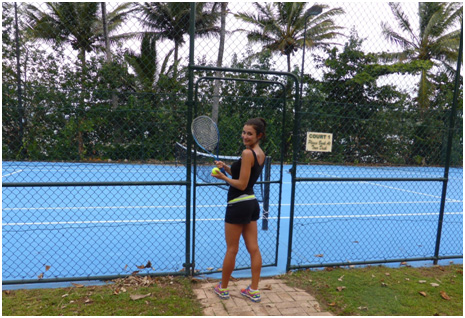A Beginners Guide To Tennis - My Top 10 Tips
With many of us getting into the recent Australian Open it is likely that over the coming weeks there are going to be some new amateur tennis recruits hitting the local courts. I am definitely a true novice when it comes to tennis, which I figure means I can only get better from here!
 Here in the Northern Suburbs and Beaches we are lucky enough to have easy access to a number of tennis courts. For me Turramurra Memorial park, St Ives Village Green and The Glade Wahroonga are a few of the local favourites close to home.
Here in the Northern Suburbs and Beaches we are lucky enough to have easy access to a number of tennis courts. For me Turramurra Memorial park, St Ives Village Green and The Glade Wahroonga are a few of the local favourites close to home.
Tennis is a great sport that combines not only a great cardio work out and socialising but is also a great way of getting out the days frustrations! Tennis involves a number of the components of fitness: agility, power, cardiovascular endurance, speed, balance and coordination- this means killing plenty of birds with one stone! However, with so many of these components involved it understandably also comes with its associated injury risks.
Common tennis injuries
- Lower limb injuries to areas such as the knee, ankle and thigh are the most common. These injuries tend to occur because of the regular sprinting, stopping /starting, pivoting and high impact nature of the game
- Upper limb injuries to areas such as the elbow, shoulder and wrist also occur due to the high-velocity and repetitive arm movements required in the game
- Back injuries can occur due to the rotation required to hit shots such as groundstrokes as well as the combined movement patterns (for example rotation, extension and lateral flexion) required to reach a difficult ball or during a serve.

My top 10 tips for a safer (and more enjoyable game):
-
Preparation. Warm-up is important to prepare the joints and muscles for the game and in turn prevent the risk of injury.
- Spend 5-10 minutes doing some cardio activity such as running forwards, backwards, jumping, skipping, star jumps etc to get the heart rate up and increase blood flow and oxygen to the necessary muscle groups
- Important to also warm up by using some of the common movements of the game, for example dribbling the ball, alternating between forehand and backhand swings, serving, overhead smashes and volleys. This better prepares the body for the relevant movement patterns when the game begins. The proper name for this is shadowing.
- Perform active stretches to put the joints and muscles through the necessary and relevant range of motion that will be used during the game.
- Cool-down. Go for a gentle 5-10 minutes walk or jog at the completion of the game. This will help your heart rate and breathing to gradually return towards resting levels. It will also help to minimise the risk of fainting or dizziness, which can result from blood pooling in the large muscles of the legs when vigorous activity is stopped suddenly. By continuing to move in a less intense way after exercise waste products such as lactic acid can be better removed from your muscles and in turn prevent unnecessary delayed onset muscle soreness (DOMS).
-
Start small and build. Don't overdo it in your first (or second) game! The important thing is to enjoy the game and if you are getting too fatigued or sore this is probably going to be less likely. Remember starting something new takes time for your body to adjust to-the cardio and muscular systems in particular. You are bound to notice some muscular fatigue and DOMS in the day or two after your first few games-don't worry this is just your body's way of responding to the new load of activity. While you may already be an active person, chances are your shoulders, arm and back haven't had to perform that amount of swings or hits of a tennis racquet in a while and they are going to let you know about it!
- Dress appropriately. Wear clothing that's breathable and easy to move in. You don't want your clothing to interfere with your ability to move around the court or make a shot.
- Wear appropriate footwear. You want to wear closed in shoes that provide good support for your feet and ankles, sufficient shock absorption, appropriate grip and are not going to make you trip over them!
- Stay hydrated. You will be surprised how much fluid you lose during a game of tennis, particularly in the warmer weather. Make sure you drink regular water or electrolyte based drinks to avoid becoming dehydrated.
- Avoid playing in extreme weather conditions. Try to avoid playing in the peak heat of the day to avoid unnecessary dehydration, premature fatigue and ultimate discomfort. On the other end of the spectrum, you may also want to avoid playing in the cold or wet to try and prevent any unwanted muscular pains or injuries (every joint or muscular ache is amplified in the cold!)
- Use an appropriate sized racquet. If you use a racquet that's too small, big, heavy or light for you, you are going to firstly be less efficient with each shot but secondly at more risk of developing an upper limb injury
-
Address injuries as they arise. If and when an injury does unfortunately occur or you have a flare-up of a pre-existing injury don’t ignore it. If you are unsure whether to ice it, heat it, move it, immobilise it, massage it, use anti-inflammatories etc make an appointment with your physio who will be able to assess the injury for you and advise you appropriately.
*Always consult your GP if you are unsure if you a safe to play a game such as tennis. - Have fun!!!

Enjoy your tennis game!
Emily
